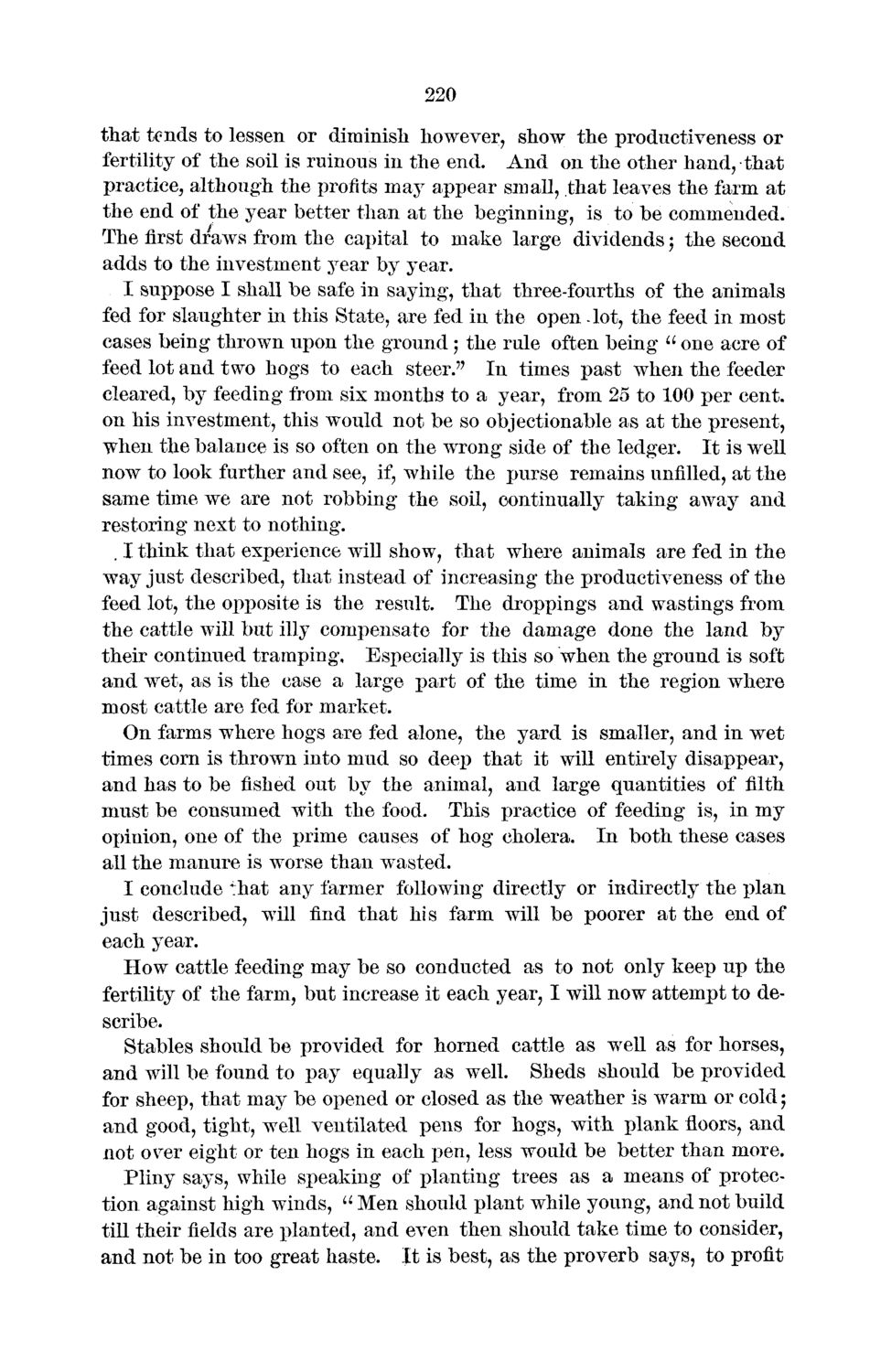| |
| |
Caption: Board of Trustees Minutes - 1872
This is a reduced-resolution page image for fast online browsing.

EXTRACTED TEXT FROM PAGE:
220 that tends to lessen or diminish however, show the productiveness or fertility of the soil is ruinous in the end. And on the other hand, that practice, although the profits may appear small, that leaves the farm at the end of the year better than at the beginning, is to be commended. The first draws from the capital to make large dividends; the second adds to the investment year by year. I suppose I shall be safe in saying, that three-fourths of the animals fed for slaughter in this State, are fed in the open -lot, the feed in most cases being thrown upon the ground ; the rule often being " one acre of feed lot and two hogs to each steer." In times past when the feeder cleared, by feeding from six months to a year, from 25 to 100 per cent, on his investment, this would not be so objectionable as at the present, when the balance is so often on the wrong side of the ledger. It is well now to look further and see, if, while the purse remains unfilled, at the same time we are not robbing the soil, continually taking away and restoring next to nothing. . I think that experience will show, that where animals are fed in the way just described, that instead of increasing the productiveness of the feed lot, the opposite is the result. The droppings and wastings from the cattle will but illy compensate for the damage done the land by their continued tramping. Especially is this so when the ground is soft and wet, as is the case a large part of the time in the region where most cattle are fed for market. On farms where hogs are fed alone, the yard is smaller, and in wet times corn is thrown into mud so deep that it will entirely disappear, and has to be fished out by the animal, and large quantities of filth must be consumed with the food. This practice of feeding is, in my opinion, one of the prime causes of hog cholera. In both these cases all the manure is worse than wasted. I conclude that any farmer following directly or indirectly the plan just described, will find that his farm will be poorer at the end of each year. How cattle feeding may be so conducted as to not only keep up the fertility of the farm, but increase it each year, I will now attempt to describe. Stables should be provided for horned cattle as well as for horses, and will be found to pay equally as well. Sheds should be provided for sheep, that may be opened or closed as the weather is warm or cold ; and good, tight, well ventilated pens for hogs, with plank floors, and not over eight or ten hogs in each pen, less would be better than more. Pliny says, while speaking of planting trees as a means of protection against high winds, u Men should plant while young, and not build till their fields are planted, and even then should take time to consider, and not be in too great haste. It is best, as the proverb says, to profit
| |